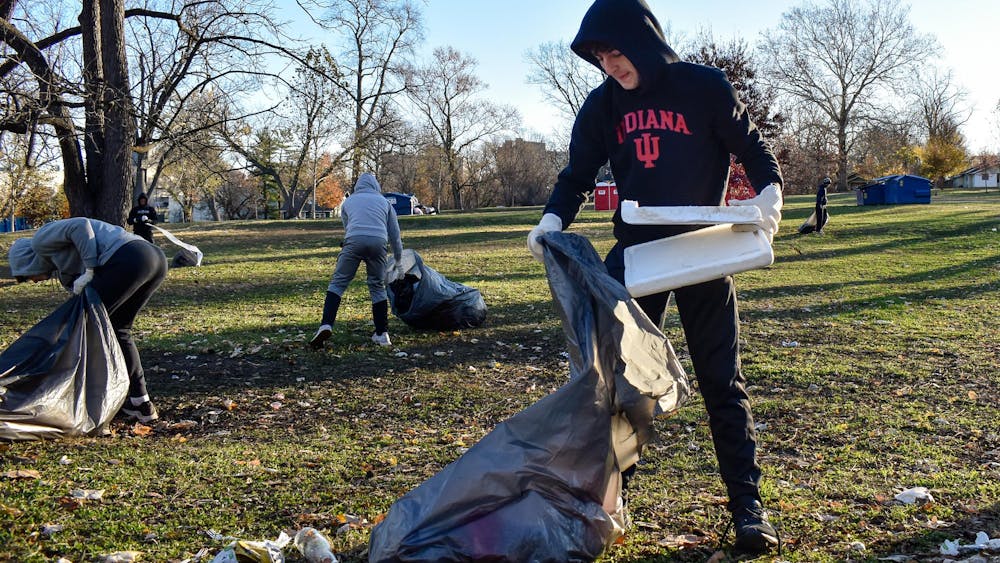“This is an awful lot like a college campus,” says John Schrader, motioning to several groups of buildings and walkways that sprawl out in front of him. \nTo a college student’s eye, the arrangement of buildings might indeed suggest something similar to the layout of a quad, with large, rectangular buildings set back from the small roads that lead to them. The buildings are arranged together in clusters, each small cluster separated from the others. And in some sense, the landscape is kind of like a college campus.\nBut behind Schrader is a fence covered in razor wire and charged with an electrical current strong enough to knock a grown man to the ground. \nIn front of him is the Westville Correctional Facility in Westville, Ind., which houses more than 3,000 inmates. Inside the walls of the buildings – the ones with doors that lock from the outside, the ones closely watched by trained guards – are some of IU’s most unlikely students. A number of inmates are pursuing associate’s and bachelor’s degrees, hoping to one day walk out from behind those walls, through the facility gates and into the outside world with a college education. \nIU’s incarcerated students complete lessons and correspond with professors via regular mail, because they do not have access to the Internet. The process can be time-consuming for the inmates, who eagerly await the mail each day to see if they’ll be one step closer to their degree and the shortened sentences that accompany it.\nSchrader, the public information officer for Westville, walks into his office and shakes hands with Richard White, an inmate pursuing a degree in general studies from IU. The general studies degree is the only degree available to students who take classes through IU’s correspondence program. \nWhite has a full beard and long hair braided into a ponytail. His muscular forearms are covered with tattoos, some of which he said he did himself while in prison. He is 46 years old and said he has been in and out of correctional facilities, mostly for burglary and drug convictions, since he was 15 or 16. Every time he was released, he returned to the same lifestyle. He said he thinks getting a college degree could finally help him break that cycle.\nSince 2000, IU has served almost 700 incarcerated students like White, said Lisa Denlinger, the executive director of marketing and communication for IU’s School of Continuing Studies. Daniel Callison, the dean of the school, said the School of Continuing Studies began serving inmates in the 1970s, but record-keeping from that time makes it difficult to discern just how many inmates have taken courses through IU or exactly when the program began. IU’s program is different from those of other universities in the state, Callison said, because IU only offers inmates correspondence courses, which means inmates have no direct teacher-student interaction. Generally, Callison said the courses consist of about 12 lessons and at least two proctored exams. For inmates in Indiana, staff members at the various correctional facilities and the state prison in Michigan City, Ind., oversee the process of distributing textbooks and lessons, making sure mail arrives on time and proctoring students’ exams.\nLike many students on the IU campus in Bloomington, White wants nothing more than to graduate. Unlike students in Bloomington, however, he has an added incentive: If he receives his bachelor’s degree while behind bars, he can receive a two-year time cut off his sentence. \nSo on this day, like many before it, White waits for the mail, hoping to receive lessons for one of his classes or grades from a class he has already completed so he can move on to his next one. The facility’s mail system is slow. Mail must be checked on the way into and out of the facility, to ensure it contains no illegal drugs or other banned materials. That, added on to IU’s sometimes lengthy processing of lessons and tests, means White spends many days frustrated. \nFor White, any day behind bars is one day too many. Set to be released in 2012, White has already received time cuts of one year for receiving his associate’s degree. During his trial, White said the judge ordered the last two years of his sentence be completed under house arrest – meaning he could go home in 2010. Add the potential two-year time-cut from his nearly-completed bachelor’s degree, and White could be out of the facility this year. White said he has only five classes remaining, and he’d like to finish them as quickly as possible. But he can only work as fast as the mail system will allow. So he waits.
Breaking through the bars
Get stories like this in your inbox
Subscribe





